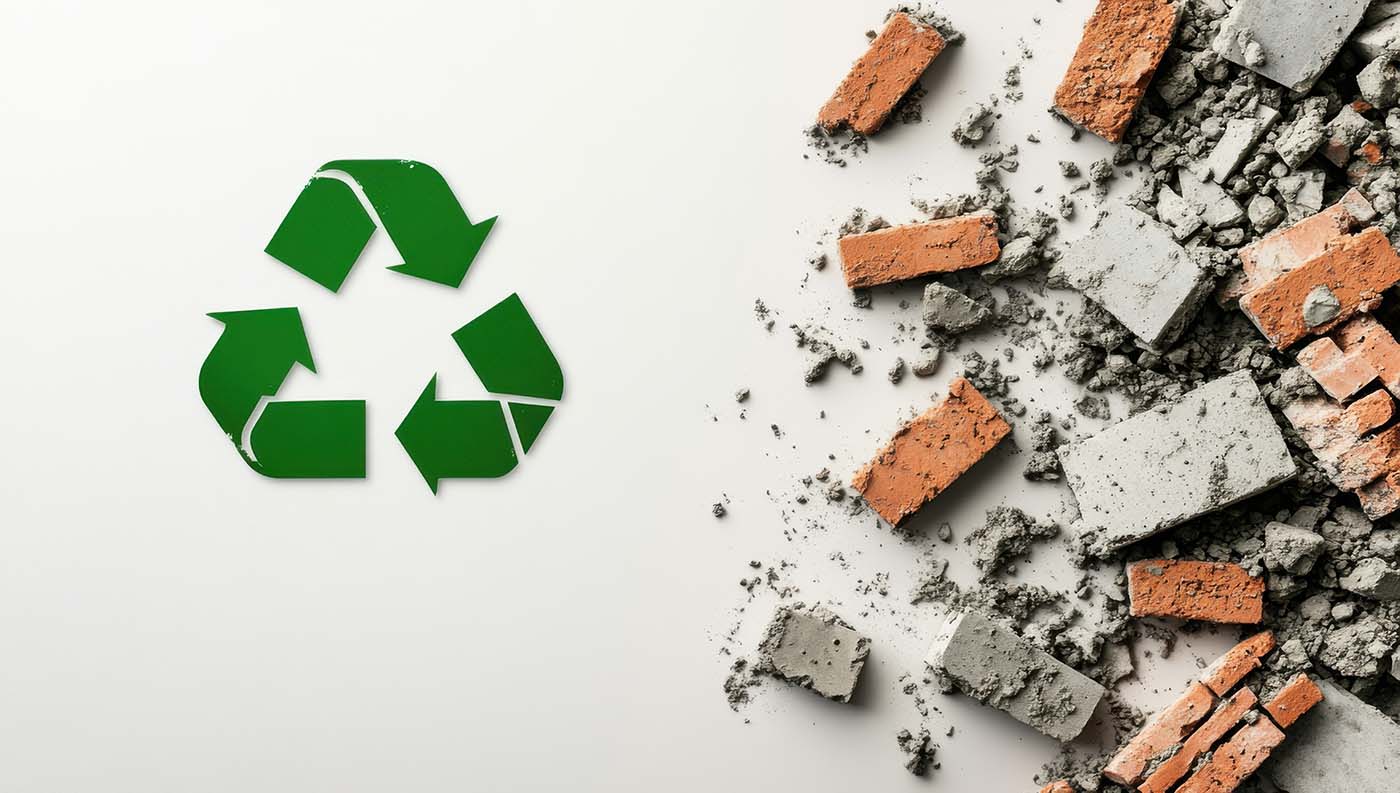Pre-demolition audits are an essential part of sustainable construction and demolition strategies. These assessments identify which materials within a building can be safely and efficiently recovered, recycled, or reused before demolition begins.
In this blog, we break down the top materials commonly salvaged during pre-demolition audits, how they’re reused, and why it pays — financially and environmentally — to prioritise recovery over disposal.
Common Materials Salvaged in Pre-Demolition Audits
Bricks and Masonry
- Reclaimed bricks are one of the most valuable salvaged materials, especially from heritage or period buildings.
- These bricks are often cleaned, sorted, and reused in conservation projects or as decorative features in modern developments.
Timber and Wood Products
- High-quality timber, such as hardwood beams, floorboards, and joists, can be stripped and reused for structural or decorative purposes.
- Plywood, MDF, and other engineered wood can sometimes be repurposed or processed into composite products.
Steel and Other Metals
- Steel, copper, and aluminium are commonly recovered, sorted, and recycled through scrap dealers.
- Structural steel can be re-certified for reuse, while non-structural metals are melted down for new products.
Concrete and Aggregates
- Though not typically reused in their original form, concrete and aggregates are often crushed on-site and used as:
- Sub-base for roads
- Fill material
- Base layers for new foundations
Fixtures and Fittings
- Doors, kitchen units, bathroom suites, and electrical fittings are often in reusable condition and can be sold or donated.
- Salvaged architectural features (e.g., fireplaces, stair railings) are especially valuable in restoration markets.
How Recovered Materials Are Reused in New Construction
Sustainable building practices encourage the integration of reclaimed materials into new designs. Here’s how:
Direct Reuse
- Cleaned and inspected materials like bricks, timber beams, or doors are reused as-is in new construction or renovation projects.
Repurposing
- Timber might be repurposed into flooring, furniture, or acoustic panelling.
- Steel and metal components can be adapted into structural reinforcements or used in fabricated systems.
Reprocessing and Recycling
- Concrete is crushed and reintroduced as hardcore or road base.
- Metals are melted down and formed into new construction products or reinforcements.
- This not only preserves valuable resources but also helps designers meet BREEAM and LEED sustainability benchmarks.
The Financial and Environmental Benefits of Material Recovery
Cost Savings
- Reduced landfill disposal fees.
- Lower material procurement costs through reuse of recovered components.
- Potential revenue streams from selling high-value salvaged materials like steel or hardwood.
Environmental Impact
- Diverts significant waste from landfill — the UK construction industry generates over 60 million tonnes of waste annually.
- Cuts down on CO₂ emissions linked to producing new materials.
- Supports circular economy principles, where resources are kept in use for as long as possible.
Compliance and Reputation
- Projects that incorporate material recovery are more likely to meet planning requirements and local authority expectations.
- Demonstrating sustainability can improve brand perception and help win future tenders — especially on public sector projects.
WPSCC: Turning Waste into Opportunity
At WPS Compliance Consulting Ltd, our Pre-Demolition Audits don’t just identify what’s waste — we uncover what’s valuable. By cataloguing recoverable materials and advising on reuse strategies, we help our clients turn end-of-life buildings into resource banks for their next development.
Our team also supports you with:
- Construction Environmental Management Plans (CEMP)
- Site Waste Management Plans (SWMP)
- Air Quality & Dust Assessments
- Environmental Audits and Planning Support


